The Framework That Built a $2 Trillion Company
First Principles Thinking: The mental model, when to use it, and how to apply it.
If you want to show support, please hit the ❤️ “Like” button at the top or bottom.
Some rules exist for a reason. Others exist simply because no one’s ever bothered to ask: Why?
Jensen Huang has a habit of asking that question.
When he founded NVIDIA, he wasn’t just building a company. He was designing a machine to solve impossible problems.
Most companies scale the same way: they add layers, managers, and processes.
Because that’s how it’s always been done.
Huang studied other companies and saw how layers create bottlenecks, burying engineers under bureaucracy.
So he asked: What kind of company attracts the world’s best minds? How do we stay small enough to move fast, but big enough to build what no one else can? How do we avoid the bureaucracy that kills innovation?
Huang built NVIDIA with a few non-negotiables1:
Keep the company as small as possible but as large as necessary.
Remove layers that slow decisions.
And share strategic direction with everyone, not just executives.
In NVIDIA, decisions don’t trickle down; they spread. Engineers aren’t waiting for permission; they are making things happen.
The result? A 30,000-person company that moves like a startup.
Huang didn’t just reject best practices2. He broke problems down to their core and rebuilt from scratch.
That’s First Principles Thinking.
The Power of First Principles Thinking
First Principles Thinking breaks problems down into their fundamental truths, stripping away assumptions and conventions. Then, it rebuilds solutions from the ground up.
Ozan Varol explains it best3:
Reasoning by analogy is like being a cover band, playing someone else’s music. First principles thinking is composing an original song.
Most people operate on analogy: This is how things are done because that’s how they’ve always been done.
First Principles thinkers ask: What is actually true? And how can we rethink this from scratch?
With respect to building a company… as with all problems, you start from first principles. What is this machine we’re trying to create, and what is its output?
— Jensen Huang
Psychologist Adam Grant in his book Think Again describes the problem well:
We laugh at people who still use Windows 95, yet we cling to opinions that we formed in 1995.
The world changes. So should our thinking.
🚨 Quick sidebar: Enjoying what you are reading? Sign up for my newsletter to get similar actionable insights delivered to your inbox.
Pssttt… you will also get a copy of my ebook, Framework for Thoughts, when you sign up!
How to Think in First Principles
First Principles Thinking isn’t just about solving problems, it’s about asking better questions. Two powerful methods:
Socratic Thinking: Ask Better Questions, Get Smarter Answers
Socrates didn’t hand out answers, he asked the kind of questions that made people rethink everything they thought they knew. This framework is now called Socratic method.
Clarify your thinking - What exactly do I believe? Why?
Challenge assumptions - How do I know this is true?
Look for evidence - Can I prove this, or am I just assuming?
Consider alternatives - What would someone who disagrees with me say?
Examine consequences - What happens if I’m wrong?
Question the question - Why am I even asking this?
Socratic method stops you from blindly accepting conventional wisdom. It forces you to rethink what you know and rebuild your understanding from the ground up.
I don’t know what’s the matter with people: they don’t learn by understanding; they learn by some other way—by rote, or something. Their knowledge is so fragile!
— Richard Feynman, Surely You're Joking, Mr. Feynman!
Digging Deeper: The Five Whys in Action
Most people stop at surface-level answers. First Principles thinkers don’t.
They keep asking “why” until they uncover the real problem.
Let’s take a factory where production is slowing down:
Why is production slowing down? → Machines keep breaking.
Why do they keep breaking? → They’re overheating.
Why are they overheating? → The cooling system isn’t working.
Why isn’t it working? → Maintenance schedules aren’t being followed.
Why aren’t they being followed? → The team is understaffed.
The real issue isn’t slow production, it’s understaffing. Fix that, and you fix everything.
The Shoe Store That Shouldn’t Have Worked
Imagine it is the year 2000. You walk into a boardroom, pitch your startup idea, and say: “We’re going to sell shoes. But not in stores, online.”
Silence. A few chuckles. Someone asks, “But how will customers know if the shoes fit?”
Good question. Most people would have stopped there. Tony Hsieh didn’t.
He didn’t just ask, “How do we sell shoes online?” He asked, “Why don’t people buy shoes online?”
The answer wasn’t about shoes. It was about risk. Customers weren’t afraid of online shopping, they were afraid of buying the wrong size and being stuck with it.
So, Tony Hsieh rewrote the rules:
Analogy Thinking: Amazon sells books online. Maybe we can sell shoes the same way.
First Principles Thinking: The real problem isn’t selling shoes, it’s eliminating the risk of a bad purchase. What if returns were effortless? (Zappos pioneered free shipping and returns.)
Second-Order Thinking: If returns are free, customers will return a lot of shoes. How do we make that work? (Zappos built a logistics system designed for high return rates.)
Curious how Tony Hsieh built Zappos? Read Delivering Happiness.
Most companies minimize returns, Zappos optimized for trust. While the industry feared free returns would be costly, Hsieh saw a path to lifelong customers.
The result? Zappos thrived, reshaping e-commerce and selling to Amazon for $1.2 billion.
But here’s the key: Tony Hsieh knew exactly which assumptions to challenge and which ones to keep.
That’s what made Zappos work.
And that’s the real challenge of First Principles Thinking: knowing when to use it.
The Right Time to Challenge the Status Quo
Most of what we do isn’t original.
We walk, talk, and work by following patterns we have seen before.
It’s faster. It’s easier. It’s how we survive.
Executives often say, “Don’t reinvent the wheel.” First Principles thinkers ask, “What if it could make a better wheel?”
But questioning everything? That’s exhausting. You cannot go through life debating the fundamentals of making coffee or tying your shoes.
The challenge isn’t just thinking from first principles, it’s knowing when to. So, here are key moments to apply First Principles Thinking:
When a system hasn’t been challenged in years: If “the way things have always been done” isn’t delivering results, it’s time to break the problem down and rebuild from the fundamentals.
After a failure: Failures often stem from outdated assumptions. When things break, reassess from the ground up. I spoke about this in my newsletter on the Swiss Cheese Model.
During market disruptions: During market shifts, past strategies often become obsolete. Rethinking core assumptions can reveal new opportunities.
When innovation is the goal: First Principles Thinking isn’t just about fixing problems, it’s how leaders create entirely new solutions that competitors haven’t considered. Jeff Bezos describes this as “Invent and Wander” time, dedicated space for open-ended exploration and challenging norms.
The Takeaway: When to Rethink, When to Accept
Use First Principles Thinking selectively. Not every problem needs to be rebuilt from scratch, know when to apply it.
Challenging the status quo is necessary. Just because something has worked before doesn’t mean it’s the best way forward.
Combine mental models. First Principles Thinking is powerful, but pairing it with second-order thinking or analogy can create even better solutions.
Dig deeper. The real problem is often hidden beneath layers of assumptions. Socratic questioning and The Five Whys help uncover it.
Progress doesn’t come from playing by the rules. It comes from rewriting them.
So the next time someone says, “That’s just how it’s done.” Ask them, “Does it have to be?”
Until next time,
Tapan (Connect with me by replying to this email)
Thank you for reading! 🙏🏽 Help me reach my goal of 2,300 readers in 2025 by sharing this post with friends, family, and colleagues! ♥️
As an Amazon Associate, tapandesai.susbtack.com earns commission from qualifying purchases.
Jensen Huang on leadership, this is quite an interesting video to watch in general.
A trick to using first principles thinking from Farnam Street podcast.





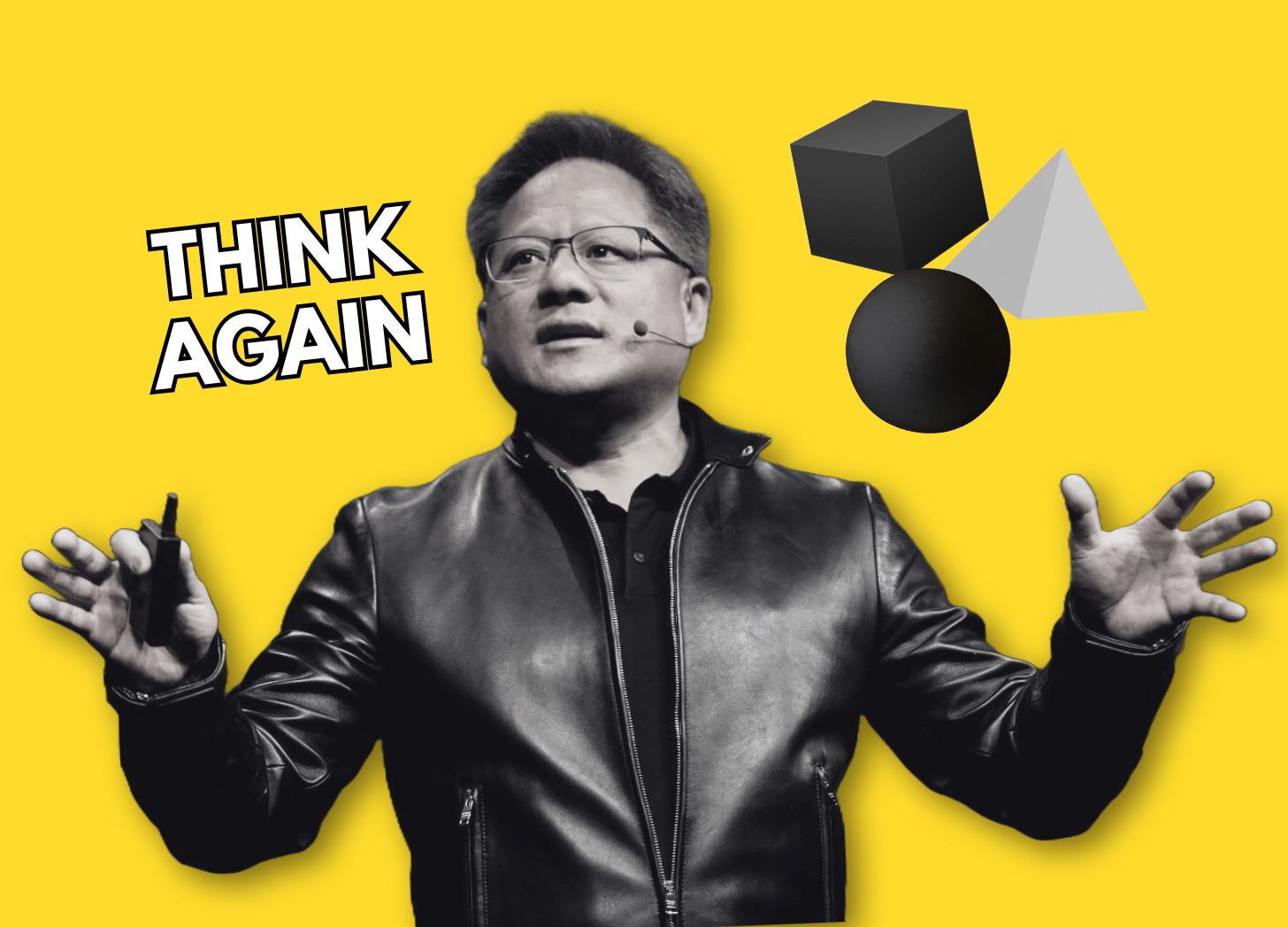


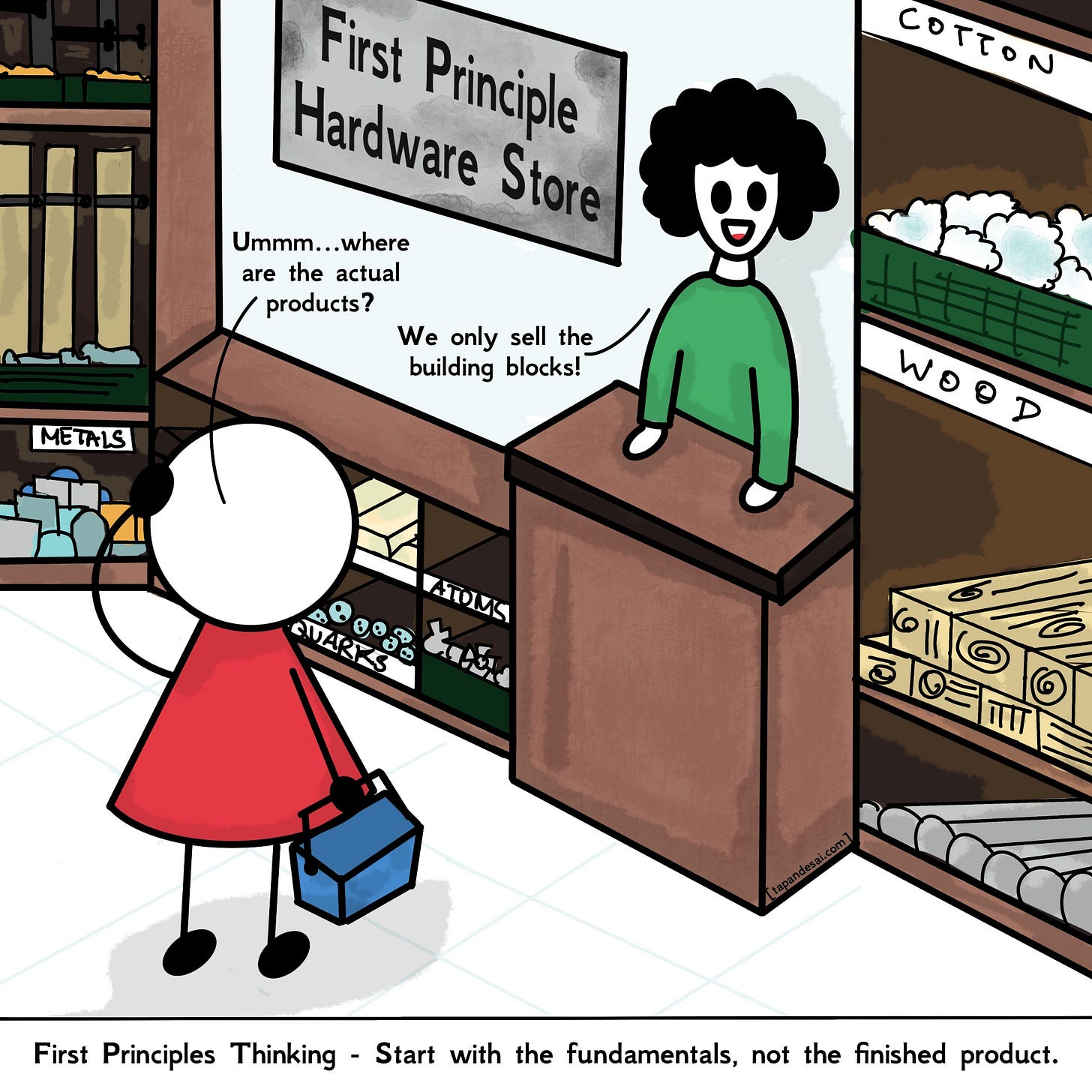
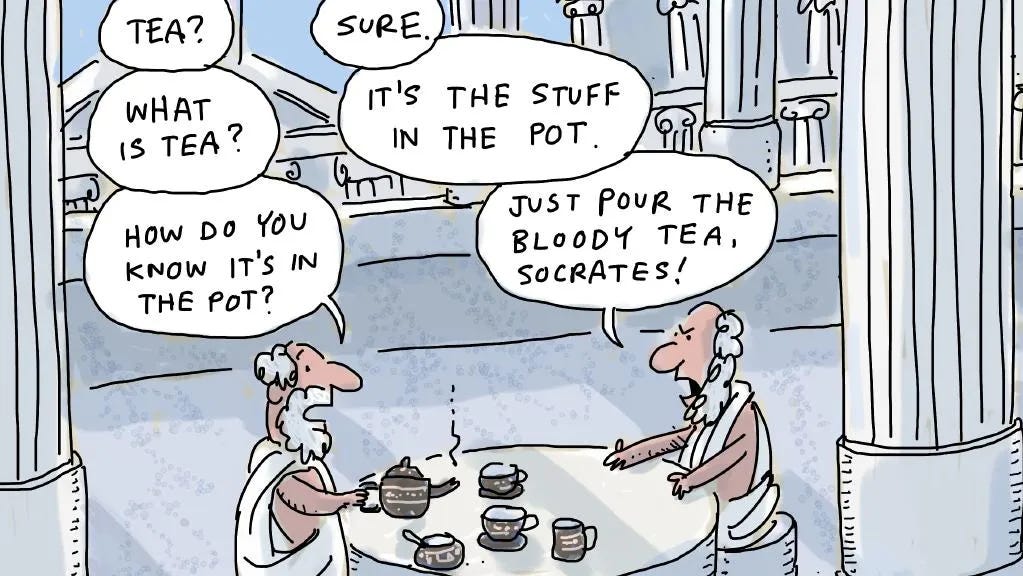
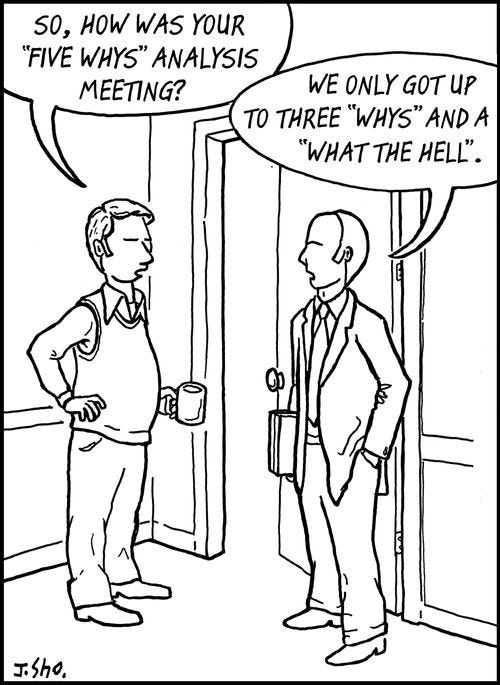
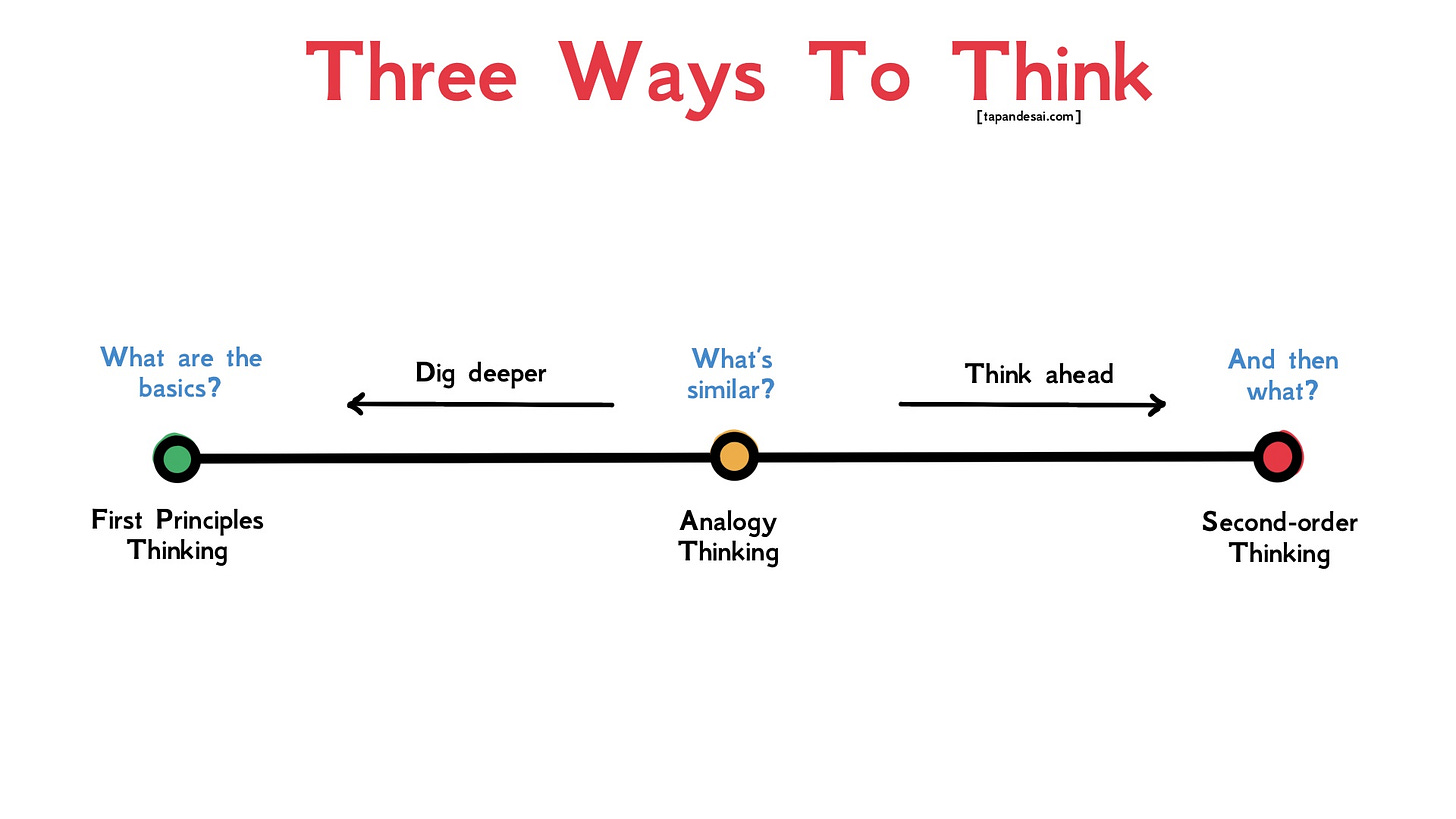

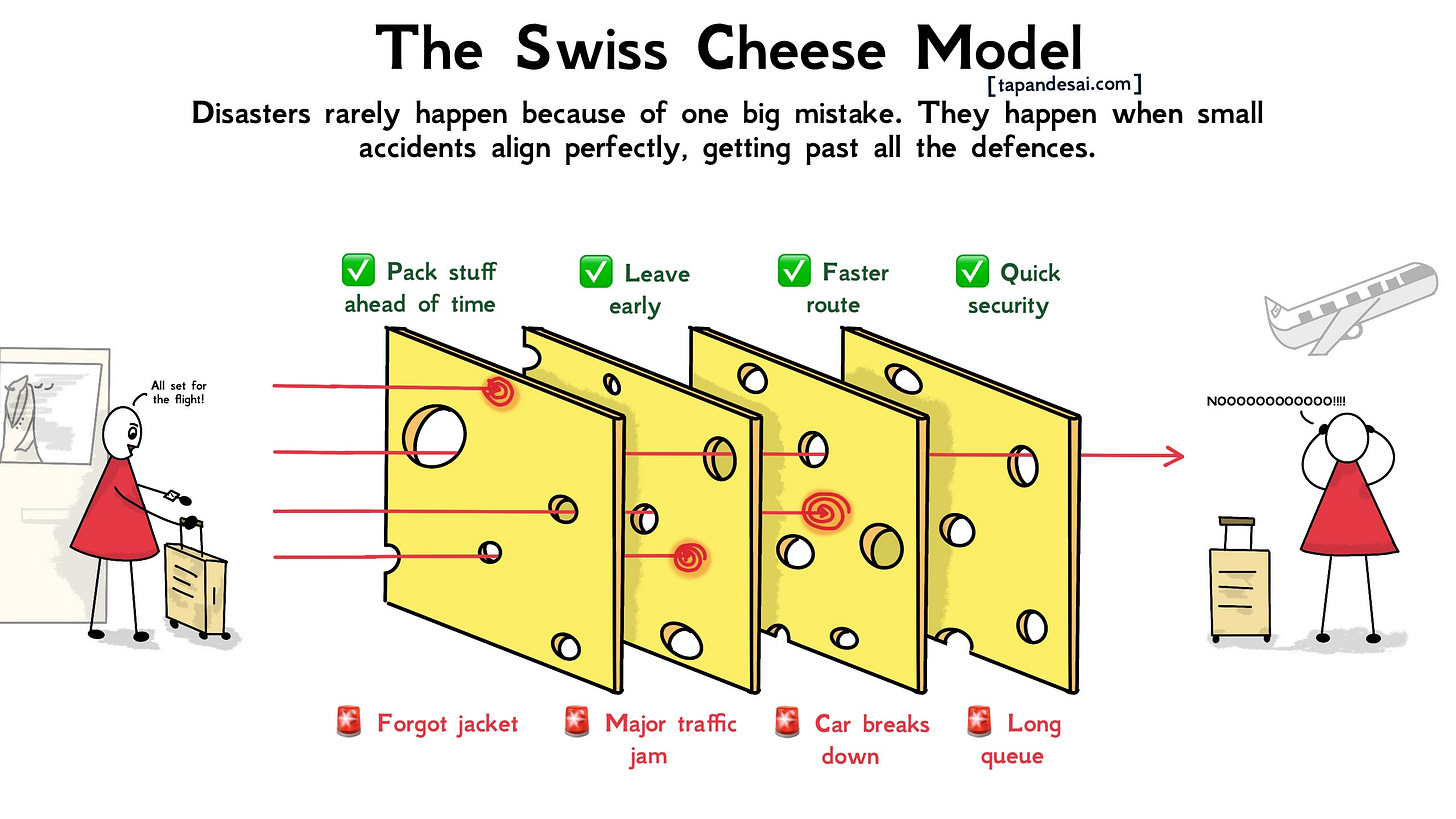
Using this as my fundamental due diligence to invest in Nvidia
this was brilliant! read this while I was taking a break from writing a PRD xP
let's see how it goes :)